Convicts 4

Brief Synopsis
Cast & Crew
Millard Kaufman
Ben Gazzara
Stuart Whitman
Ray Walston
Vincent Price
Rod Steiger
Film Details
Technical Specs

Synopsis
During the Great Depression, John Resko kills a storekeeper for trying to prevent him from taking a toy for his infant child. As he awaits execution at Sing Sing, his sentence is commuted to life imprisonment, and he is transferred to Dannemora Prison. Surly and belligerent, he is in constant trouble with both the authorities and his fellow inmates, notably Iggy, a comical near-psychotic, and Wino, the black "Halloween Bandit." Resko's state of mind is hardly improved by the news that his wife has left him and that his father died while saving a child's life in an effort to atone for his son's crime. Following two unsuccessful escape attempts and several long stretches in solitary confinement, Resko's ability to paint is discovered by the prison's new and more compassionate principal keeper. At first reluctant to participate in the prison's art class, Resko gradually finds himself becoming more and more absorbed in his drawings; and almost without his realizing it, a gradual rehabilitation takes place. His work is eventually discovered and introduced to the outside world by noted art critic Carl Carmer. Then, in 1949, after 18 years in prison, Resko is paroled. As he leaves Dannemora, his grownup daughter and his first grandchild are waiting for him.

Director

Millard Kaufman
Cast

Ben Gazzara
Stuart Whitman

Ray Walston

Vincent Price

Rod Steiger
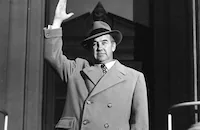
Broderick Crawford
Dodie Stevens
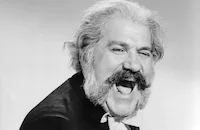
Jack Kruschen
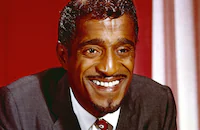
Sammy Davis Jr.
Naomi Stevens
Carmen Phillips
Susan Silo
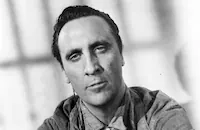
Timothy Carey
Roland Lastarza
Tom Gilson
Arthur Malet
Lee Krieger
Myron Healey
Josip Elic

Jack Albertson
Robert H. Harris
Andy Albin
Burt Lange
John Kellogg
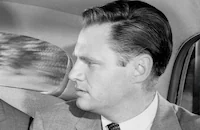
Adam Williams
Robert Christopher
Warren Kemmerling
Kreg Martin
John Close
Billy Varga
Reggie Nalder
John Dierkes
Crew
Joseph Biroc
Arthur Broidy
Ralph Butler
Archie Dattelbaum
Robert Gary
Doane Harrison
Wally Harton
James E. Henderling
Millard Kaufman
Joseph Kish
Mickey Lewis
A. Ronald Lubin
Janette Marvin
Edward Morey Jr.
Ted Mossman
Eve Newman
Milt Olsen
Clark Paylow
John Resko
Howard Richmond
Leonard Rosenman
Norah Sharpe
William Turner
Roger J. Weinberg
James West
George White

Videos
Movie Clip


Hosted Intro
Film Details
Technical Specs

Articles
Convicts 4
Resko thanked his maker for his second chance and went to Dannemora Prison with a giddy smile on his face. But he soon realized that "life in prison" is not the same thing as "life."
In 1958, Resko published his memoirs as Reprieve: The Testament of John Resko. It was an instant sensation. The bestseller soon became a touchstone of debates about prison reform.
The 1962 Allied Artists release Convicts 4 is a dramatization of Resko's memoir, adapted for the screen and directed by Millard Kaufman. The screenwriter behind such classics as Bad Day at Black Rock (1955) valued social relevance and was unafraid of controversy. During the blacklist era he had lent his name as a front to Dalton Trumbo for Gun Crazy (1950). Filming Reprieve seemed to offer Kaufman the social-activist jackpot: not only was its humanism and race-conscious sensitivity a perfect fit for the 1960s zeitgeist but the fact that it was a true story meant that he could say, without artifice, "this is how it is."
Such verisimilitude came at a cost. Had Kaufman manufactured a prison story from scratch, he could have jiggered its various elements for maximum dramatic effect and played up the exploitable elements. Resko's experiences, harrowing though they were, continually approached without ever fully engaging the familiar conventions of prison dramas. Anyone coming to Convicts 4 expecting the kind of hard-boiled "Escape From Dannemora" thrills that Allied Artists promised were going to find a subversively different film inside the box.
Time and again, the film sets up an apparent villain only to defang him. The movie opens with Resko (Ben Gazzara) being prepared for his electrocution. The casual sadism of the sequence is unsettling: he is placed in a disabled electric chair to have his head shaved, while the guards discuss execution methods around the world. Resko is one reasonable murderer, though, and his keepers aren't monsters. Before the scene is done, the guards are apologizing to Resko and openly acknowledging the arbitrary inconsistency of capital punishment. When Resko is transferred to Dannemora, he encounters an embittered and brutal warden played by Rod Steiger. Before Steiger even gets a chance to display his personal brand of dehumanizing tyranny, he is replaced by Stuart Whitman, a reform-minded liberal who might as well be the President of the John Resko Fan Club. The first two inmates Resko meets (Ray Walston and Sammy Davis, Jr.) each make an attempt on his life, but quickly are converted to Resko's allies and friends. A prison bully (Timothy Carey) pulls Resko aside, but instead of compelling him to pay tribute in exchange for protection, magnanimously arranges a cushy job at the prison laundry.
Chekhov would have been appalled. Convicts 4 introduces more than one shiv in its early reels, yet not one person gets stabbed.
Even the nature of Resko's crime is calculated to deny us easy answers. The circumstances that pushed Resko into his desperate act are somewhat understandable, but Resko himself is unwilling to ask for sympathy on that count. The filmmakers confidently proceed on the assumption that the audience will be sympathetic to Resko's situation without having to forgive him (even though, later in the picture, the widow and children of Resko's victim are said to have forgiven him). His father (Jack Kruschen) conceives of the idea that he can absolve his son's guilt by saving someone else's life-a life for a life. It's a noble idea, but in putting it into practice, the elder Resko loses his own life. Given that the state considers John Resko legally dead (being sentenced to life imprisonment allows his wife to remarry without having to get Resko's consent to a divorce), there are now three lives down versus one life saved. The scales of justice cannot be balanced.
In shoving all the obvious and familiar prison-movie conflicts off the stage, Kaufman sacrifices cheap drama in favor of something more interesting. The conventional thrust of a prison story is a litany of complaints: the death penalty is inhuman, the guards are sadists, inmates are treated cruelly... in other words, the injustices of the justice system are problems demanding to be fixed. Convicts 4 posits a situation in which all of these grievances have been addressed, and yet the essential injustice remains. Let the Stuart Whitmans of the world implement all their reforms-you are still left with the fundamental inhumanity of putting men into cages.
It is hard to conceive of a convict better situated for redemption than John Resko, yet he is without hope and with nothing left to lose.
Eventually, thanks to the warden's enlightened theory of art therapy, Resko finds literal as well as figurative release. Art critic Carl Carmer (Vincent Price) discovers genuine talent in Resko's paintings. He becomes an art world celebrity, and the outside world petitions for his sentence to be lifted. As happy endings go, it's hard won. Resko lost twenty years of his life to this system, not to mention his own family. His friends (Walston, Cary, and Davis) are not as lucky. Whitman's reforms only go so far. As Walston's character philosophically notes, "Society gets the criminals it deserves."
Walston was one of the tentpegs of a modestly distinguished cast working near the height of their respective powers. Best known for playing the Devil in Damn Yankees! (1958) and just a year away from becoming My Favorite Martian (1963-1966), Walston brought a peculiarly jittery energy to his role. Compared to the austere sincerity of most of his costars, Walston acts like a bipolar teenager. What Walston plays for laughs, Sammy Davis, Jr. treats with earnestness. Davis was a versatile performer of unlimited talents. Prior to appearing as one of the Convicts 4 he appeared in the original version of Ocean's Eleven (1960) with fellow Rat Packers Frank Sinatra and Dean Martin. The third of the four titular convicts was Timothy Carey, an oddball supporting actor usually cast as a psychopath. Carey's large frame, sad eyes, and drawling voice made him memorable even when playing bit parts. Shortly after his work on Convicts 4, Carey set out to broaden his horizons by sheer moxie-producing, writing, directing, and starring in The World's Greatest Sinner (1962). That B-movie epic finds Carey playing a rock-n-roll atheist evangelist who sets out to become a dictator (the film is even weirder than this description makes it sound).
Leading man Ben Gazzara was not often in such a central role, and had previously never made a film in Hollywood at all. He was a fine character actor, and was fresh from his career high point in Otto Preminger's Anatomy of a Murder (1959) opposite James Stewart and Lee Remick. More to the point, he was fresh from a softball game where he had broken his ankle, and the injury obliged Kaufman to delay production by a month.
Stuart Whitman was a former boxer turned Hollywood leading man who had just been nominated for an Academy Award for his role in The Mark (1961) the previous year. Rod Steiger and Vincent Price appear in cameo roles, trading on their established screen personas. In a clever casting move, Price is introduced as art critic Carl Carmer, when in real life Price was a genuine art collector and expert.
It was an impressive cast for a low-budget film from a first-time director. Millard Kaufman later regretted that this was his only outing as a director. In later years he came to understand that the director holds more power over the expression of a film's ideas than does the screenwriter. At the time, though, Kaufman felt out of his depth, and relied heavily on the advice of his editor, Doane Harrison, one of Billy Wilder's longtime associates. To the dismay of the cast, Harrsion's input slanted the emphasis away from the actors and onto the technical concerns of the shoot. Meanwhile, Kaufman allowed himself to be ground down by the petty annoyances of the job.
For example, the title. Allied Artists felt that the film deserved a punchier title than Reprieve. The title Convicts 4 sounds terrific-and with Leonard Rosenman's boisterous jazz score blaring through the zippy opening title sequence, the audience is primed for an exciting night at the movies. The posters promised prison-break action-but aside from two brief sequences early in the picture, the film itself has little interest in such stuff. The real-life John Resko turned screenwriter himself and wrote a crackerjack prison-break story for Alfred Hitchcock's television series. Aired in 1964, "Final Escape" was one of the show's most popular hours, and was remade in 1985 for the revival series Alfred Hitchcock Presents.
Instead of such pulpy pleasures, Kaufman's film is a contemplative work. Of the four convicts of the title, three play no more than supporting roles. Sammy Davis, Jr. played a slightly bigger role on the set than he did on screen. While filming on location at Folsom Prison, Davis volunteered to put on a show for the inmates when the project wrapped. The prison officials agreed-but, proving they had a poor understanding of Davis' act, made the star promise first not to make racial or sexual jokes. Davis performed, giving Folsom's lost souls a brief respite from boredom and anger. As Convicts 4 shows, such moments are fleeting and rare.
Producer: A. Ronald Lubin
Director: Millard Kaufman
Screenplay: Millard Kaufman (writer); John Resko (autobiography Reprieve)
Cinematography: Joseph F. Biroc
Art Direction: Howard Richmond
Music: Leonard Rosenman
Film Editing: George White
Cast: Ben Gazzara (John Resko), Stuart Whitman (Principal keeper), Ray Walston (Iggy), Vincent Price (Carl Carmer), Rod Steiger (Tiptoes), Broderick Crawford (Warden), Dodie Stevens (Resko's sister), Jack Kruschen (Resko's father), Sammy Davis, Jr. (Wino).
BW-105m.
by David Kalat
Sources:
Ben Gazzara, In the Moment: My Life as an Actor
Millard Kaufman, Plots and Characters: A Screenwriter on Screenwriting
The National Council on Crime and Delinquency, Crime and Delinquency Volume 3
John Resko, Reprieve: The Testament of John Resko

Convicts 4
Quotes
Trivia
After filming was completed, star Sammy Davis Jr. asked for and received permission to put on a show for the inmates. The warden set two conditions: no racial jokes (which could start a riot) and no sex jokes (for obvious reasons). Four thousand inmates attended the show, Davis told no racial or sex jokes, and the show went off with no trouble.
Notes
Location scenes filmed at Folsom Prison. Working and alternative title: Reprieve.

Miscellaneous Notes
Released in United States 1962
Released in United States 1962














